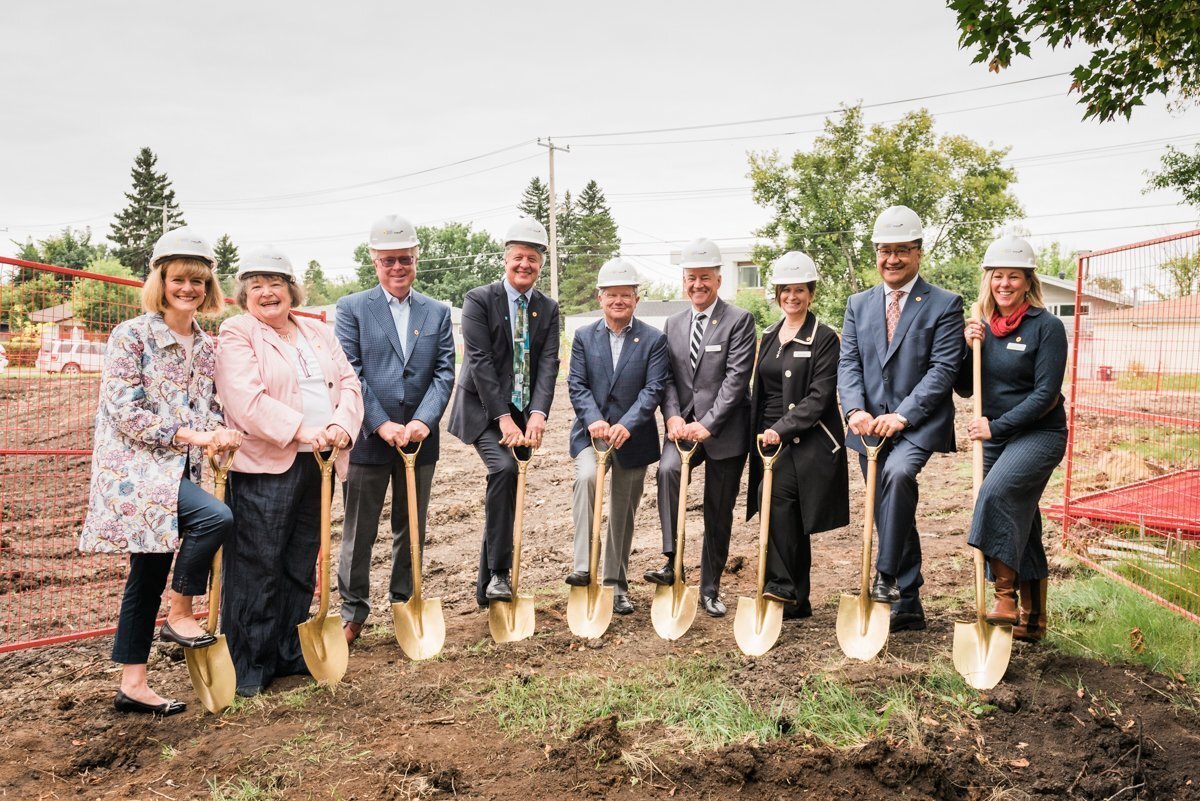Myths Around Infill
Whether you’re considering an infill, one is popping up in your neighbourhood, or you are interested in the intricacies of Edmonton’s mature neighbourhoods, you probably have some idea of the common perceptions surrounding infill development. As part of our commitment to infill with integrity, we’re debunking some of the misconceptions prevalent with infill housing.
MYTH #1- A million-dollar home in the suburbs should have the same fit and finish as a million-dollar home in the inner city.
Building an infill is an intricate and much more complex process that requires more design investment and longer lead times on permitting. This, in turn, costs more money. There is a number of factors that drive the cost up on infill. The following diagram highlights some of the financial figures around the reasons why infill is so expensive relative to building in suburban neighbourhoods. In addition, costs associated w/ demolition and hazardous material abatement can tack on additional figures in the tens of thousands of dollars – these are costs unseen in suburban development. And, although one might have to sacrifice some of those accessories that come with a looser budget, infill homeowners benefit from a long list of advantages in living more central.
MYTH #2- There is a lack of information regarding what will be built on an infill lot on my street, and I am nervous about the unknown and all the negative media coverage I hear about living next to an infill.
A number of resources exist to encourage homeowners to look after their best interests as neighbours to an infill build. Genuinely speaking, the city encourages a direct, open dialogue with builders. With developers that champion integrity and close relationships between all stakeholders (neighbours, especially!) you can be reassured that good communication is a priority to keep you educated and in the loop. The city also has a checklist available to reference that outlines the correct steps in looking after your own interest and to help you ensure that builders are also following the rules & bylaws. Signage will be posted on-site with contact information of the builder and owner, should you have any concerns. This signage will also include a graphic to illustrate the look and feel of the future home going up on the infill lot.
MYTH #3- Builders change the design as they go, and there is a lack of accountability to maintain what was approved by the city in the permit phase.
The city of Edmonton has a department dedicated entirely to Development Permit Compliance. This department will inspect the build twice while construction is taking place: firstly, at the framing stage, and secondly, prior to occupancy towards the end of the build. As a result, all elements that were approved in the development permit application (the massing, height, setbacks, window locations, exterior finishes, etc.) are what was actually constructed by the builders. If the build does not comply, the city requires a re-submission for permits. This ensures the accountability of the developers is maintained throughout the entire process. With these controls in place, builders must uphold the integrity of what was initially approved.
MYTH #4- I am a neighbour to an infill build and fear my lot will be flooded by the new construction in the case of rain or spring melt.
According to drainage bylaw no.18093, any new build needs to submit a lot grading plan along with the development/building permit application. Lot grading is part of the development permit process and it ensures the ground is sloped properly to direct rainwater and runoff away from the home and the adjacent properties. With lot-grading comes checks and balances by the city to assure cooperation during the build. Before any construction occurs, the city will review the plan. After construction is complete, the property is graded, surveyed for a lot-grading certificate, and inspected so that it complies with an approved lot-grading plan. In case of a negative grade from new infill development that presents the possibility of runoff to a neighbouring property, the city requires that retaining walls and/or swales (a small trench built to collect water) be integrated on property lines in order to prevent existing properties from flooding. See more on infills and drainage in Edmonton here.
MYTH #5- There is a lack of advocacy around infill or any sort of stakeholder group that is working to improve policy around infill.
Quite the opposite, actually! The Infill Development in Edmonton Association or ‘IDEA’ is one of the major stakeholder groups in the city of Edmonton for infill. With a dedicated staff that work full time and are deeply invested in all things infill, they remain up to date with the latest and greatest policy regarding infill, while working closely with the city as strong advocates for urban development. IDEA members represent the bulk of builders and infill stakeholders and meet regularly to discuss ongoing important issues surrounding infill development.
Hear it from them, directly:
“IDEA IS A COMMUNITY OF COMMITTED EDMONTONIANS PASSIONATE ABOUT THE POSITIVE TRANSFORMATION OF OUR MATURE AND EXISTING NEIGHBOURHOODS. IDEA is a proactive group that provides education and resources on infill development to the community and industry. We help to connect organizations, experts, businesses and individuals in order to encourage high quality and vibrant infill development in greater Edmonton. Our membership people who share a forward-looking vision of an Edmonton that is vibrant, walkable, efficient, flexible, resilient, sustainable, and healthy. We drive change towards people-centred communities.”
— https://www.infilledmonton.com/
Despite the pervasiveness of misconceptions surrounding infill builds, there is plenty of evidence underlying the collective benefits of infills to sustain thriving Edmonton neighbourhoods. Numerous organizations have poured their hearts into creating resources and establishing research in order to show the value of infill development in urban spaces. It is Urbis’ goal to provide positive architectural interventions that enrich the communities in which they are situated. Interested in learning more? Contact us today!
















